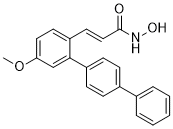Studies were designed on the same principle of initiation phase followed by individualised PRN dosing schedule based on disease progression as judged by visual acuity and OCT changes, with a low threshold for re-treatment. In the RESTORE study, from month 3 to 11, monthly injections were given until vision was stabilised. Injections were re-initiated if there was BCVA decrease due to DMO progression. In DRCR.net study, re-injection was done in all visits in which there was an evidence of improvement. If success or failure criteria were met it was left to the investigator’s discretion to re-inject. The visual acuity eligibility criterion of the BOLT study was also different, with a lower visual acuity range of 35�C69 letters, unlike the DRCR.net study where 50% of the study eyes had $66 letters, and 19.8% of the RESTORE patients who a BCVA of more than 73 letters. Despite these aforementioned differences in baseline characteristics, the patterns of response of DMO to ranibizumab and bevacizumab are very similar when standard outcomes are assessed. But, this study also highlights important differences that should be explored in adequately powered larger studies. The median baseline CMT in the bevacizumab arm in the BOLT study for patients who exited at 24 months was higher than that of patients who completed 2 years in the DRCR.net trial, suggesting that comparisons between the drugs should be made with caution. However, whilst in the ranibizumab studies approximately 40% had persistent macular oedema defined as OCT central subfield $250 mm and only 20%�C24% had more than mildly thickened retina defined as OCT central subfield #250 mm at two years, the corresponding figures in the bevacizumab arm of the BOLT study were 65% and 56% respectively. This suggests that further studies should explore the concept that the ��drying effect’ of bevacizumab may be less effective than for Ranibizumab. Despite the fact that greater reductions in thickness were observed in BOLT participants with macular thickness of $400 mm compared to those with #400 mm, the mean  macular thickness was still $400 mm at 12 and 24 months, and the proportion that achieved a dry macula was limited to 14% and 27% at 12 and 24 months respectively. Similar effects were observed in the DRCR.net study. However, the proportion with $2 step log improvement in LogOCT was lower in the BOLT study compared to the DRCR.net study. Although the BOLT study is a small study, these exploratory analyses provide support for a comparative study of ranibizumab and bevacizumab. Some of these differences may be related to differences in molecular weight, half-life and degree of retinal penetration of bevacizumab and ranibizumab based on their structural differences. However, the importance of these proposed differences is controversial. Further studies are required to elicit the optimal therapeutic effect of bevacizumab in different retinal thickness profiles.
macular thickness was still $400 mm at 12 and 24 months, and the proportion that achieved a dry macula was limited to 14% and 27% at 12 and 24 months respectively. Similar effects were observed in the DRCR.net study. However, the proportion with $2 step log improvement in LogOCT was lower in the BOLT study compared to the DRCR.net study. Although the BOLT study is a small study, these exploratory analyses provide support for a comparative study of ranibizumab and bevacizumab. Some of these differences may be related to differences in molecular weight, half-life and degree of retinal penetration of bevacizumab and ranibizumab based on their structural differences. However, the importance of these proposed differences is controversial. Further studies are required to elicit the optimal therapeutic effect of bevacizumab in different retinal thickness profiles.